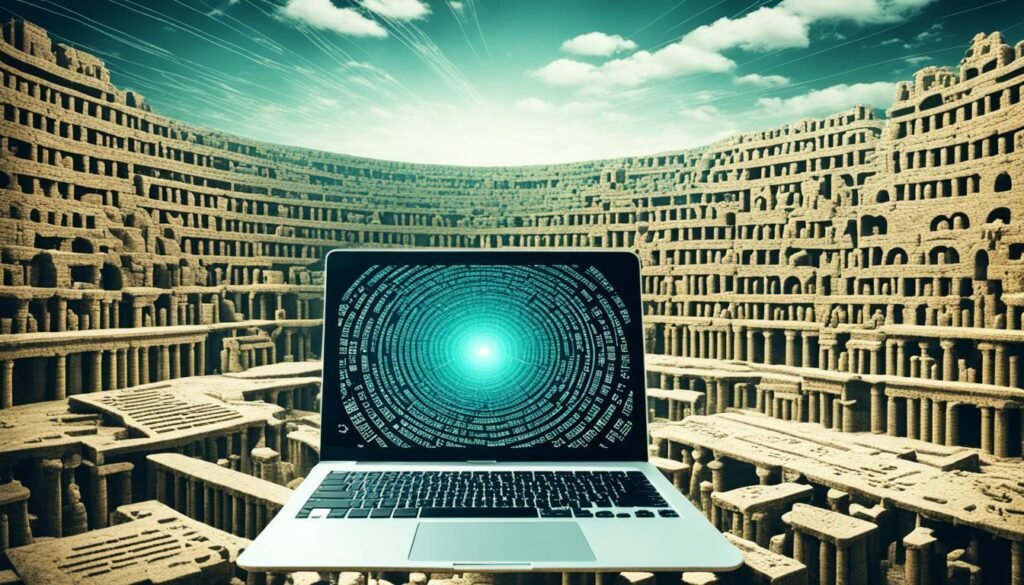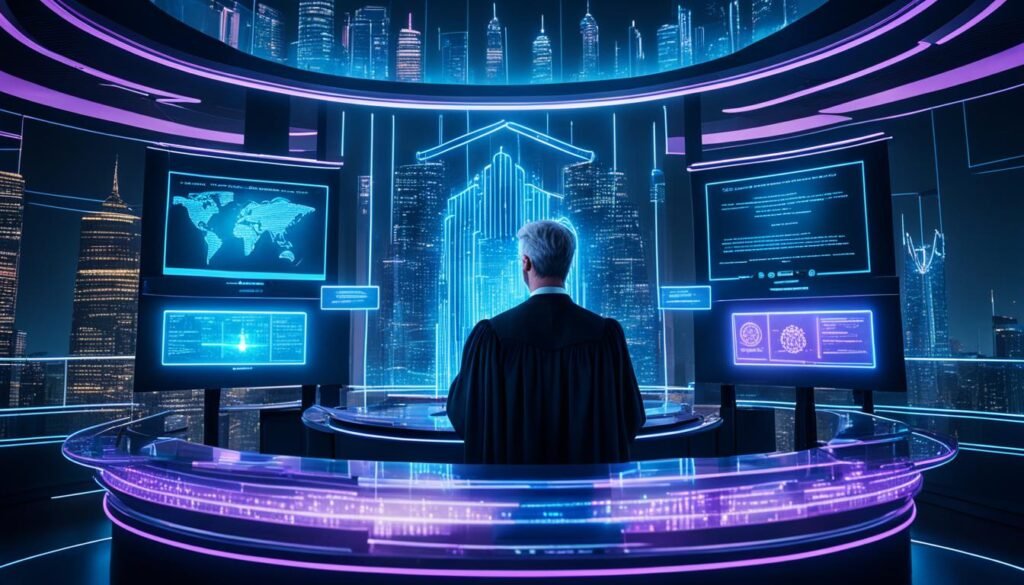A legal code is a set of statutory laws for a certain area of law. Ancient civilizations first created these codes to maintain order. They made these rules to guide how people should behave.
Also Read: The Role And Responsibilities Of Legal Counsel In Corporate Governance
Over time, cultural, religious, and political factors shaped these legal codes. These influences have led to the varied legal systems we see today. We will look at how legal codes have changed since ancient times to now, addressing new issues in the digital age. This journey shows the effects on our modern societies.
Key Takeaways
- Legal codes have evolved from ancient civilizations to the modern era, influenced by cultural, religious, and political factors.
- The development of legal frameworks has shaped diverse legal systems across the world, from civil law to common law traditions.
- The digital age has posed new challenges for legal codes, such as intellectual property and privacy rights.
- Technology has had a significant impact on the practice of law, requiring legal systems to adapt to emerging technologies.
- The diversity of legal codes reflects the complex interplay between local cultural norms and universal principles of justice and governance.
Ancient Origins of Legal Code
Today’s laws started in ancient places like Mesopotamia, Rome, and the East. They began writing down laws that everyone had to follow. This made a clear set of rules for people to live by, which was a big step for law.
Also Read: The Role Of Legal Precedent In Judicial Decision-making
Cuneiform Law and the Code of Hammurabi
In the city of Ur, around 2100 BCE, people started writing down laws on clay tablets. A well-known set of laws from Babylon, around 1750 BCE, is the Code of Hammurabi. It had 282 laws on things like crimes and trade. The Code of Hammurabi is a key part of legal history.
Twelve Tables of Roman Law
Rome made the Twelve Tables of Roman Law around 450 BCE. They were written on bronze tablets. This was the first significant written law in Rome. These laws covered many areas, like crimes and family life.
Later, in the 6th century CE, there was the Corpus Juris Civilis. It was a big collection of Roman laws by Emperor Justinian I. It influenced Western legal systems a lot.
Law of Manu and Edicts of Ashoka
In ancient India, the Law of Manu was a rulebook from about 200 BCE. It set the rules for Hindu life and law. Then, the Edicts of Ashoka, written on stone in the 3rd century BCE, gave out laws and moral rules in ancient India.
Legal Code in the Middle Ages

In the Middle Ages, Europe’s legal system got a lot from the feudal system and the Catholic Church. The feudal system was about who owned land and what they had to do for their leaders. This time also saw the Magna Carta in 1215. It was signed by King John of England and put limits on the king’s power while also giving rights to free people.
Also Read: Legal Rights In The Digital Age: Privacy And Data Protection
Feudalism and the Magna Carta
The feudal system during the Middle Ages meant a detailed network of land ownership and duties between lords and vassals. It deeply affected how society and laws worked. The Magna Carta changed things when King John and England’s barons agreed to limit the king’s power. This document helped start what we now know as English common law.
Canon Law and the Catholic Church
The Catholic Church had its own special laws, known as canon law. These laws were for church matters and often worked together with the regular legal system. Sometimes, the Church and the state fought over who got to make and enforce laws.
The Enlightenment and Age of Revolutions

The Enlightenment brought new ideas about natural law and individual rights. These ideas spread during the 18th and 19th centuries. They influenced both the American and French Revolutions. People began to question the government and the Church’s authority to control laws.
Also Read: The Litigation Process: From Filing To Verdict
Natural Law and Individual Rights
Enlightenment thinkers like John Locke and Jean-Jacques Rousseau led the way. They taught that everyone has basic rights given by nature. Governments should exist to protect these rights. This was a big change from the old beliefs about kings and their right to total power.
The United States Constitution
In 1787, the United States shaped its system based on these ideals. The Constitution was created to keep government power in check. It divides power among different branches, making sure no one gets too much power. The Bill of Rights came along in 1791. It guaranteed rights and freedoms for all Americans.
The Napoleonic Code
In France, the French Revolution birthed similar Enlightenment principles. In 1804, Napoleon made the Napoleonic Code law. This code focused on equality and set clear civil rules. It became a model for many nations in Europe and Latin America during the 19th century.
The Spread of Legal Code Systems

The Western legal tradition started in Europe and then moved to the Americas. It became the most common legal code system in the world. Unlike this system, many others, like those in India, the Muslim world, and China, use religious beliefs as their foundation. This includes Confucianism, Hinduism, and Islamic law.
Also Read: What Are The Key Components Of Effective Career Education Systems?
There’s a key difference between civil law and common law systems. civil law systems follow specific legal codes. On the other hand, common law systems focus more on judicial interpretation and precedent. The culture, politics, and history of a place also play a big role in shaping its legal system.
Legal Code and the Industrial Revolution

The Industrial Revolution sped across the globe in the 19th century. It brought big changes in society, economy, and technology. In the U.S., the American Civil War forced legal systems to address states’ rights and the Constitution’s validity nation-wide.
The American Civil War and States’ Rights
The American Civil War started over a key debate: states’ rights versus federal power. Southern states believed they could leave the Union, citing the Constitution. This clash over the Constitution’s meaning and power balance caused a horrible four-year war.
Women’s Rights and Social Welfare
The Industrial Revolution spurred big social changes and women’s rights, and social welfare. New technology and mass media made people rethink intellectual property and privacy rights. The 20th century saw major steps in government’s role in civil rights and other social issues.
Challenges of the Digital Age

The digital age brings challenges for our legal systems. It’s easy to copy and share online info. This makes it hard to know when intellectual property and privacy rights are hurt. Digital piracy and making fake things cause problems worldwide. Countries like Russia and China show little action against counterfeit products. The legal system is working on how to deal with this in a fast-changing digital world.
Intellectual Property and Privacy
The digital age is rethinking old views on intellectual property and privacy. Copying and sharing online is easy, making it tough to stick to copyright laws and keep trade secrets safe. People and companies must solve tricky legal matters to protect their digital assets and personal info. The law is working to keep up with tech changes, aiming to protect intellectual property and privacy rights well in this new era.
Digital Piracy and Counterfeit Laws
Digital piracy and fake thing making are big legal issues worldwide. Places like Russia and China have weak counterfeit laws. This has helped these crimes grow. As time goes on in the digital age, laws are being adjusted to fight digital piracy better and protect intellectual property.
| Issue | Description | Legal Implications |
|---|---|---|
| Intellectual Property | The ease of copying and sharing digital content online has challenged traditional notions of intellectual property rights. | Businesses and individuals must navigate complex legal issues to safeguard their digital assets and trade secrets. |
| Privacy | The vast amount of personal information available online has raised concerns about privacy rights and data protection. | Legal systems must adapt to ensure that individual privacy rights are adequately protected in the digital age. |
| Digital Piracy | The illegal downloading and distribution of copyrighted digital content has become a global issue. | Countries with lenient counterfeit laws, such as Russia and China, have struggled to effectively combat digital piracy. |
| Counterfeit Laws | The production and sale of counterfeit goods, both physical and digital, has become a significant challenge for the legal system. | Governments must strengthen their counterfeit laws and enforcement efforts to protect businesses and consumers from these illegal activities. |
The Impact of Technology on Legal Code

Technology is changing how we practice law and understand legal codes. Innovations like artificial intelligence, online documentation, and remote work are making big differences. Legal pros now use AI to do tasks more efficiently, like research and analyzing documents. The move to virtual proceedings and remote work has also changed how rules are applied.
Artificial Intelligence and Online Documentation
The use of artificial intelligence in law has greatly improved how fast and accurately we handle digital documentation. AI can go through mountains of legal texts, pick out useful info, and spot trends that are hard for humans to see. This speeds up how laws are understood and applied, making legal decisions more solid and consistent.
Remote Work and Virtual Proceedings
The COVID-19 outbreak has pushed the legal world to embrace remote work and virtual proceedings faster. As a result, laws have had to adjust to fit these new ways of working. Things like online court appearances and signing legal papers digitally have become common. It’s all part of making sure justice and rights are protected as the world goes more digital.
| Technology | Impact on Legal Code | Key Considerations |
|---|---|---|
| Artificial Intelligence | Streamlines legal research and document analysis, enhances efficiency and accuracy of digital documentation | Ensuring ethical and transparent use of AI, addressing concerns around bias and accountability |
| Remote Work and Virtual Proceedings | Necessitates regulatory adaptation to accommodate new modes of legal practice, ensures continued administration of justice | Balancing the need for digital transformation with the preservation of due process and client confidentiality |
Legal Code Across Cultures

Legal codes have grown through many cultural and religious influences globally. The West follows secular laws, using either common or civil law systems. In contrast, India, the Muslim world, and China have laws profoundly influenced by faith and philosophy.
Civil Law vs. Common Law Systems
Countries like France, Germany, and Japan use the civil law system. It relies on clearly written laws. On the other hand, the United States, the United Kingdom, and Canada follow a different path. They practice common law, where court decisions and tradition guide law.
Religious and Cultural Influences
Legal traditions show how cultures and faith affect laws. Hindu, Islamic, and Confucian laws are deeply rooted in these cultures’ beliefs. They run alongside secular laws, adding to the diversity of legal systems worldwide.
As times change, legal systems need to keep up with the global community’s views. It’s essential to value the variety in legal codes and cultures. This helps create a fair and just world for everyone.
Conclusion
The history of legal codes is a complex journey. It involves many social, political, and technological forces. Legal systems began in ancient times and continue adapting today to challenges like the digital age.
Today, societies face new complex issues. The legal system must change but keep its core beliefs of justice, equality, and the rule of law. The mix of cultural diversity and technological impact brings both opportunities and challenges. It pushes the legal system to keep updating and adapting.
Moving ahead, the legal code and its keepers should be ready for new challenges. These include new technologies, changing social trends, and a growing world. By staying alert and true to the basic principles of the law, the legal system can remain a key part of a fair society. It’s a system that caters to everyone’s needs.
FAQs
Q: What is the historical evolution of legal code across different cultures?
A: The historical evolution of legal code across different cultures refers to the development and formation of legal systems and statutes in various civilizations and societies throughout history.
Q: What is the significance of codification in legal systems?
A: Codification involves the process of arranging and organizing laws, regulations, and statutes into a systematic code, making them more accessible and comprehensive for individuals involved in the legal field.
Q: How is the United States Code different from other legal codes?
A: The United States Code is the official compilation of federal laws in the United States, covering a wide range of subjects such as criminal law, civil rights, and administrative regulations.
Q: What is the concept of positive law in legislation?
A: Positive law represents statutes that have been enacted by a governmental body and are recognized as valid laws, as opposed to customary or common law that is based on tradition and judicial decisions.
Q: How are legal codes updated and referenced in the legislative process?
A: Legal codes are updated through the legislative process, where new laws are enacted, amended, or repealed. They are referenced through citations and cross-references within the legal documents.
Q: What is the role of statute in the legal code?
A: Statutes are formal written laws that are enacted by a legislative body and form an essential part of the legal code, providing regulations and guidelines for individuals and organizations.
Q: What are some notable examples of legal codes in different cultures?
A: Some notable examples include the German Civil Code, Babylonian Code of Hammurabi, Uniform Commercial Code in the United States, and various other regional and historical legal codes.
Source Links
- https://www.history.com/news/hammurabi-code-legal-system-influence
- https://en.wikipedia.org/wiki/List_of_ancient_legal_codes
- https://study.com/academy/lesson/history-law-overview-origins.html





